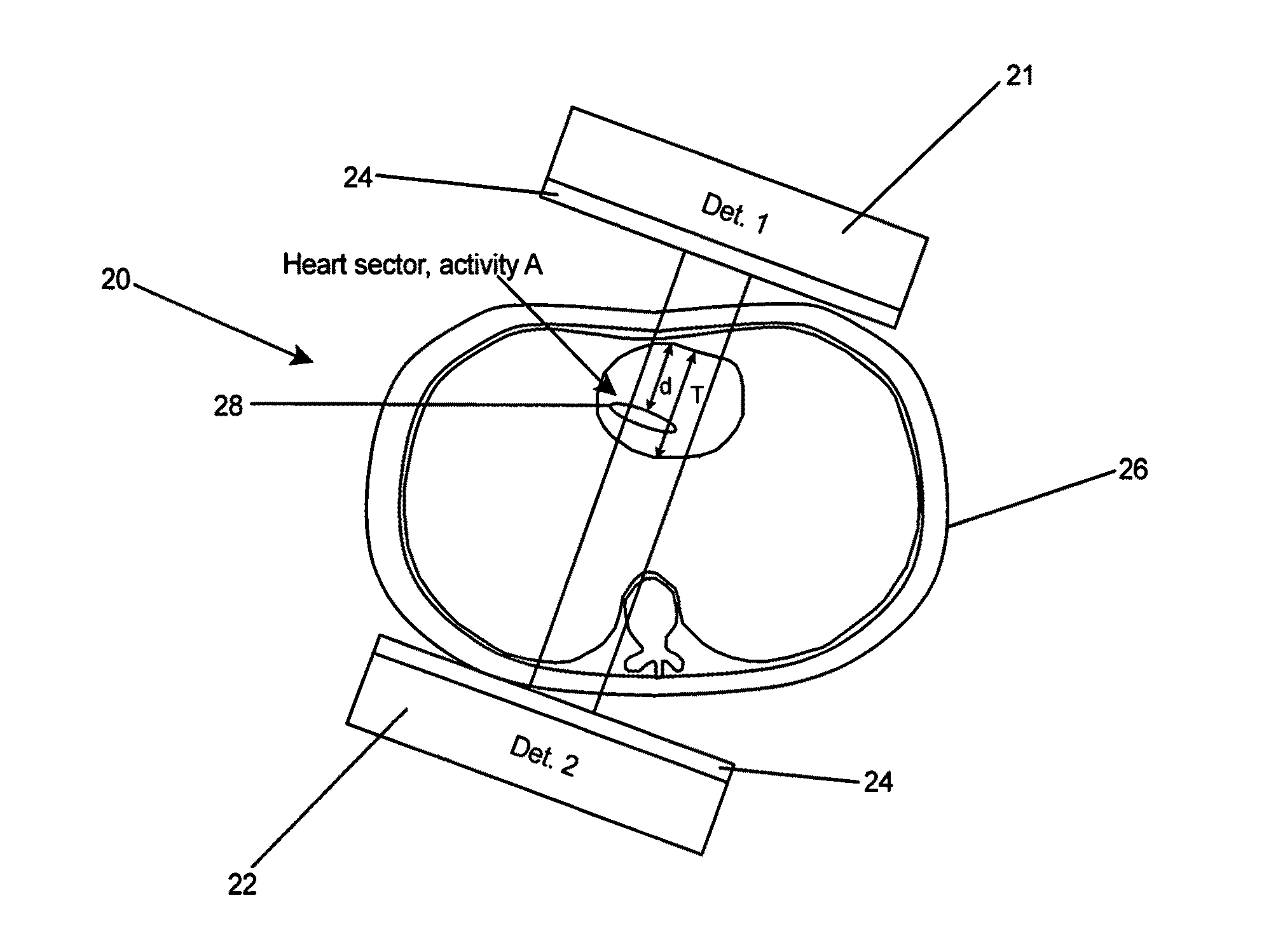Imaging system for cardiac planar imaging using a dedicated dual-head gamma camera
a planar imaging and imaging system technology, applied in the field of cardiac imaging, can solve the problems of not helping with the absorption issue, unable to achieve post-acquisition corrections in limited quantities, and poor sensitivity to detect heart abnormalities, and achieve the effect of reducing the large dead zon
- Summary
- Abstract
- Description
- Claims
- Application Information
AI Technical Summary
Benefits of technology
Problems solved by technology
Method used
Image
Examples
second embodiment
[0063]37) As shown in FIG. 4, the absorption-correcting first-pass cardiac system 41 of the present invention includes two pairs of co-registered gamma detector heads 42 and 44. The use of two pairs of compact co-registered gamma imagers provides a stereotactic view of the heart and region around the heart 40. The angles and positions of the detectors 42 and 44 relative to the patient's body and the relative angles between the two pairs are flexible and adjustable within the mechanical limitations dictated by the size of the detector heads and the associated mounting gear. The simultaneous dynamic recording of two stereotactic views of the heart will provide depths information to disentangle contributions from overlapping sections of the heart. Based on these complementary views, the specialized adjunct software will de-convolve these contributions based on a dynamic model of the propagation of the injection bolus in the heart chambers and in the coronary system. This will result in...
third embodiment
[0064]38) A possible third embodiment is to use the original one set of two co-registered cameras but to split the injection procedure into two injections separated by a short time of the order of about 60 seconds, with heart viewed from two different stereotactic directions. In this tightly executed timed procedure, after about 30 sec of data collection for the first view of the heart, the detector heads will be swiftly repositioned to the second view position and the new injection will be executed with a second imaging run of about 30 sec. The second injection will be adding the activity from a radioactive bolus to the activity present in the patient's body from the previous injection, but with proper modeling of the dynamic phenomena in the heart region and subsequent removal of background levels, more information about dynamics of the blood flow will be obtained than if limited to the one obtained from the first injection only. This approach enables the use of a more economical ...
PUM
 Login to View More
Login to View More Abstract
Description
Claims
Application Information
 Login to View More
Login to View More - R&D
- Intellectual Property
- Life Sciences
- Materials
- Tech Scout
- Unparalleled Data Quality
- Higher Quality Content
- 60% Fewer Hallucinations
Browse by: Latest US Patents, China's latest patents, Technical Efficacy Thesaurus, Application Domain, Technology Topic, Popular Technical Reports.
© 2025 PatSnap. All rights reserved.Legal|Privacy policy|Modern Slavery Act Transparency Statement|Sitemap|About US| Contact US: help@patsnap.com



